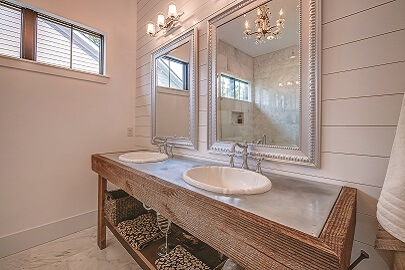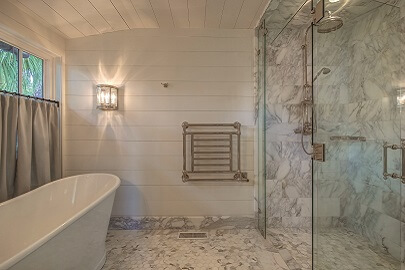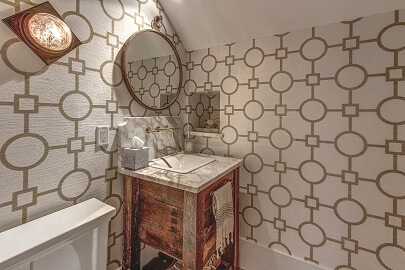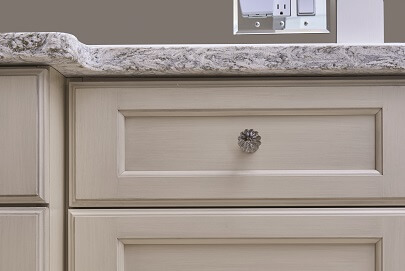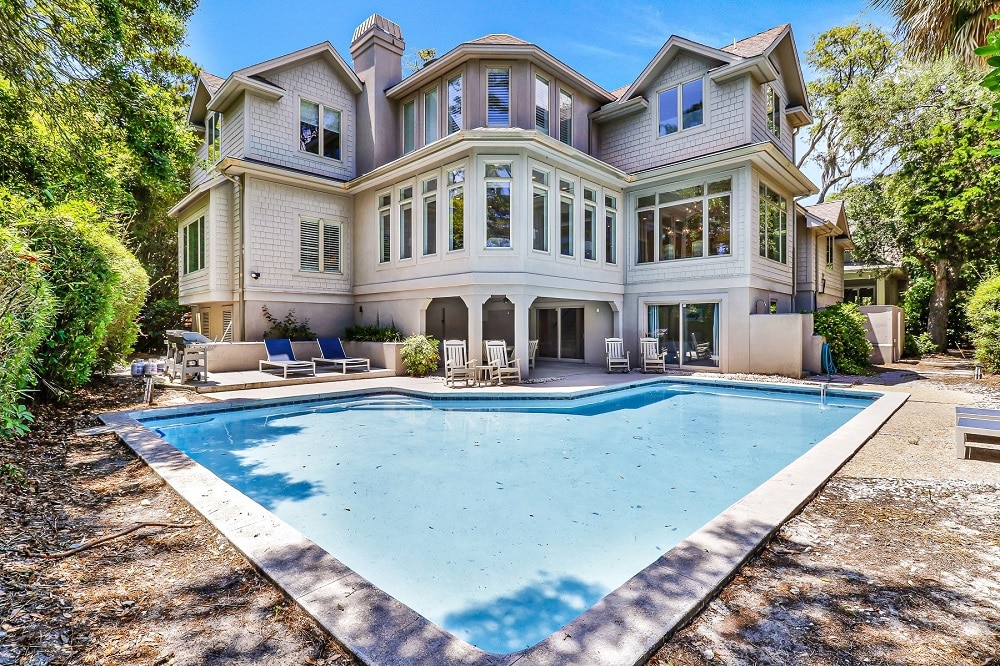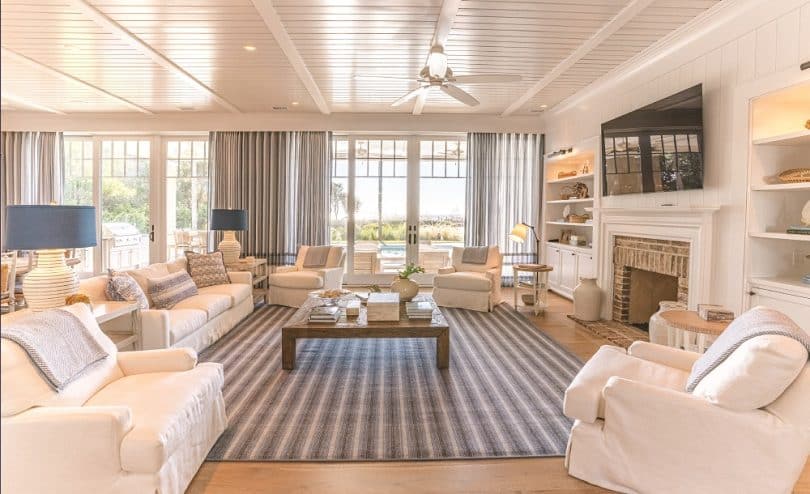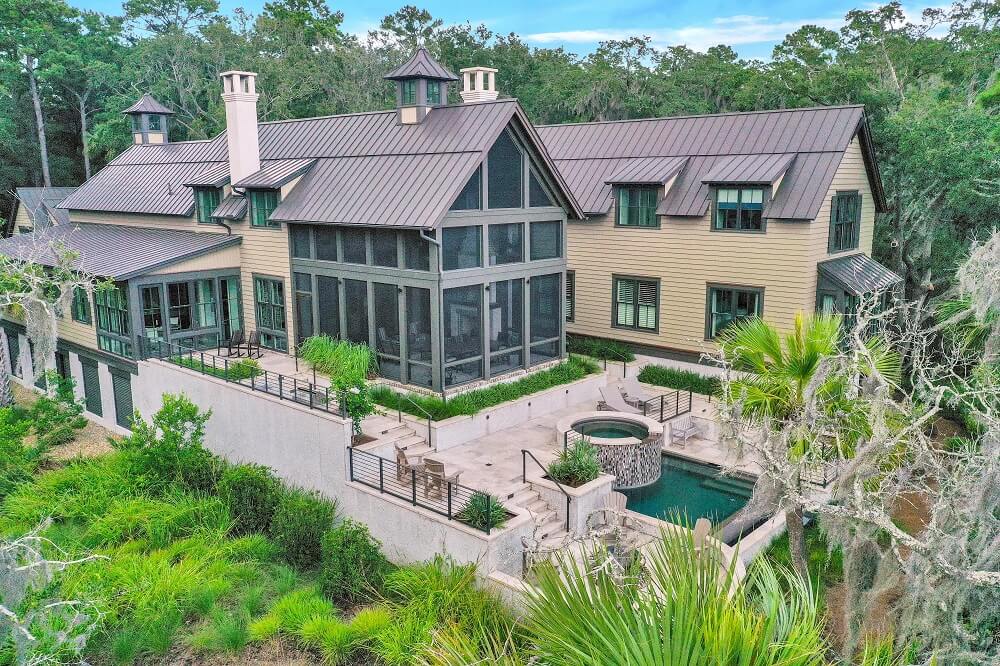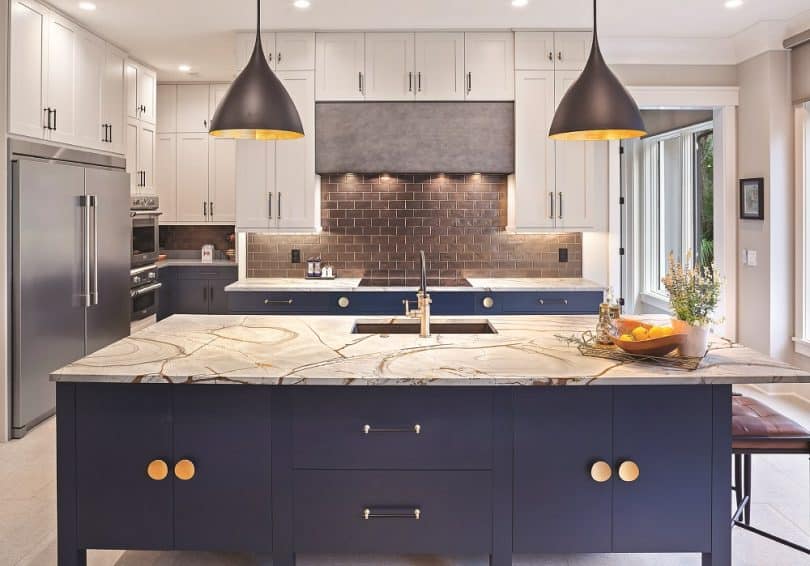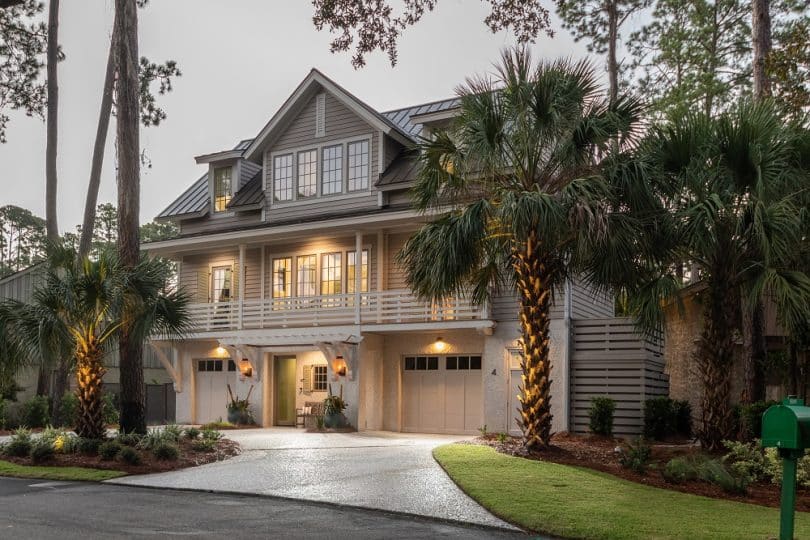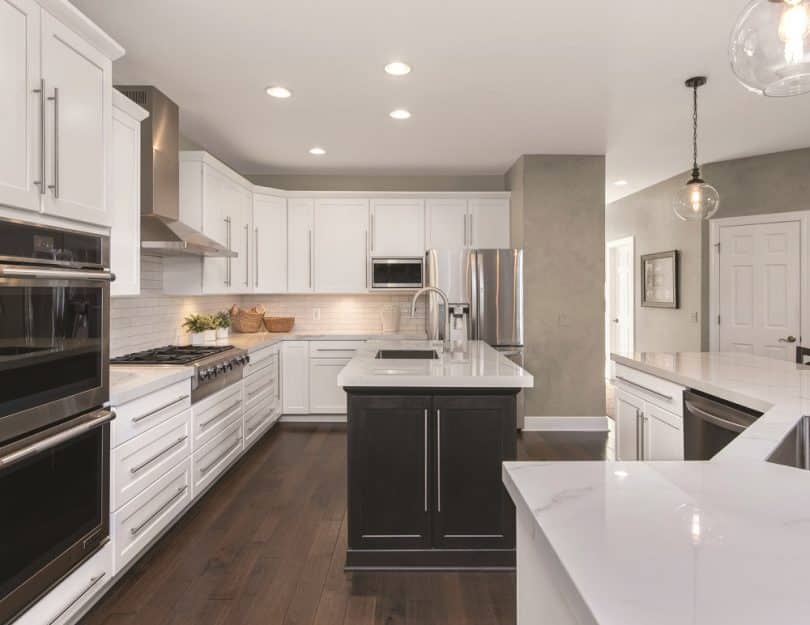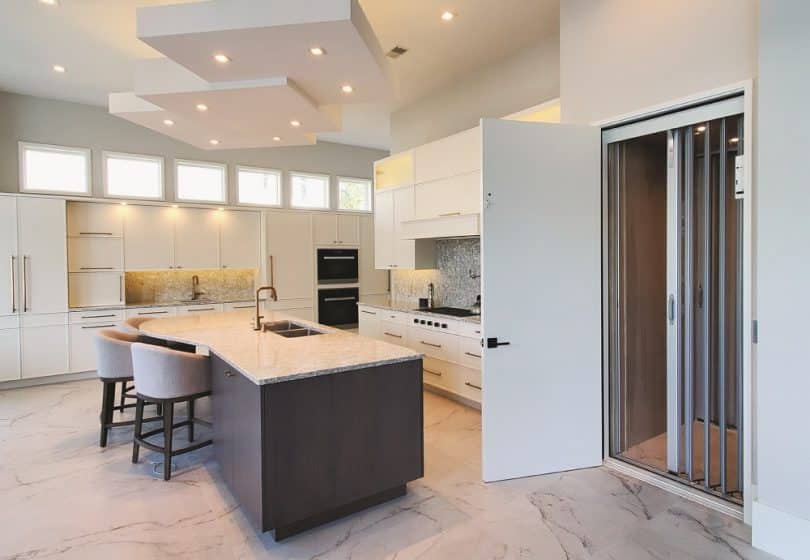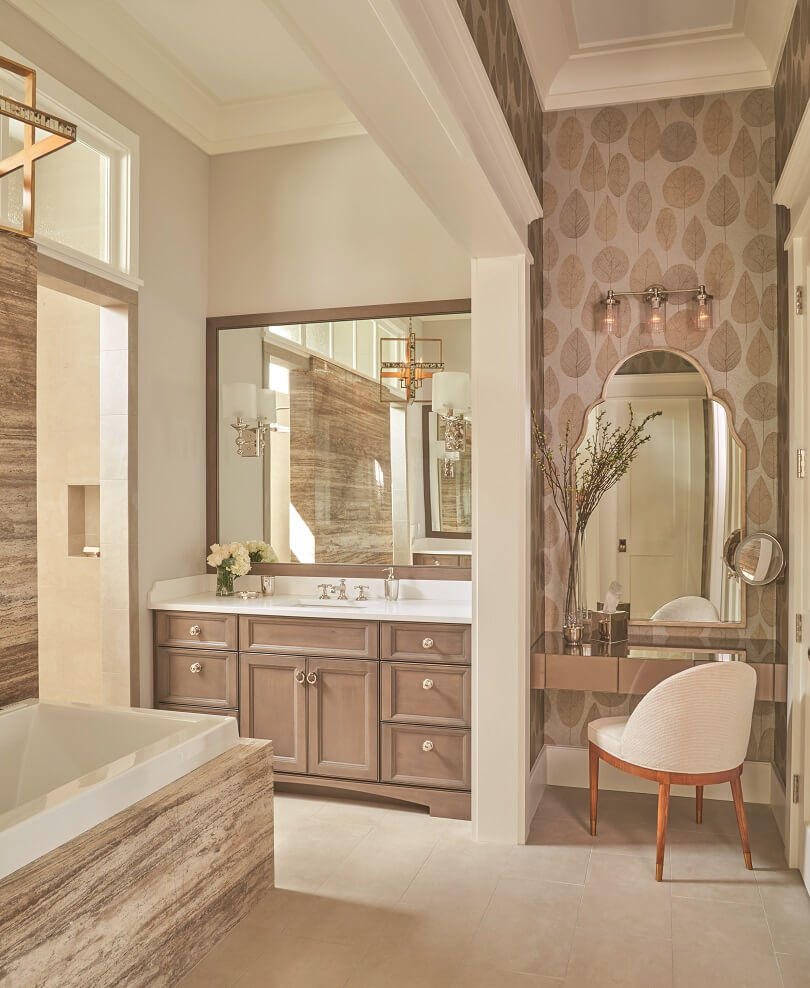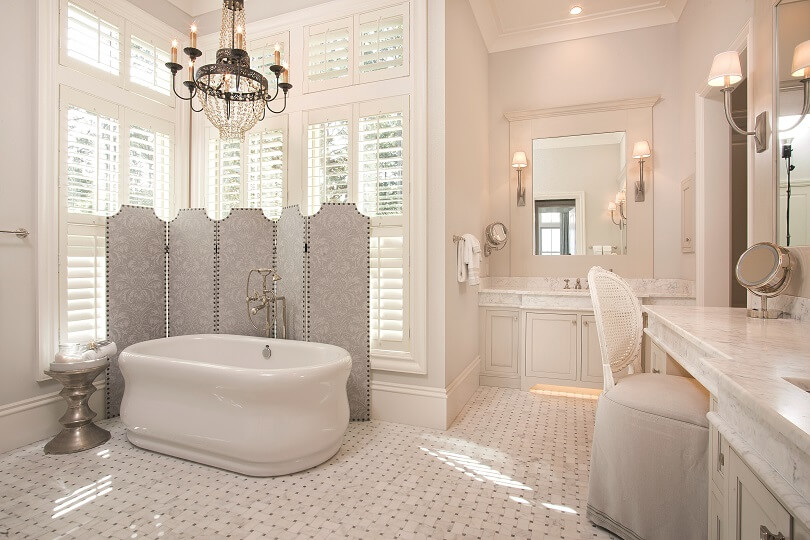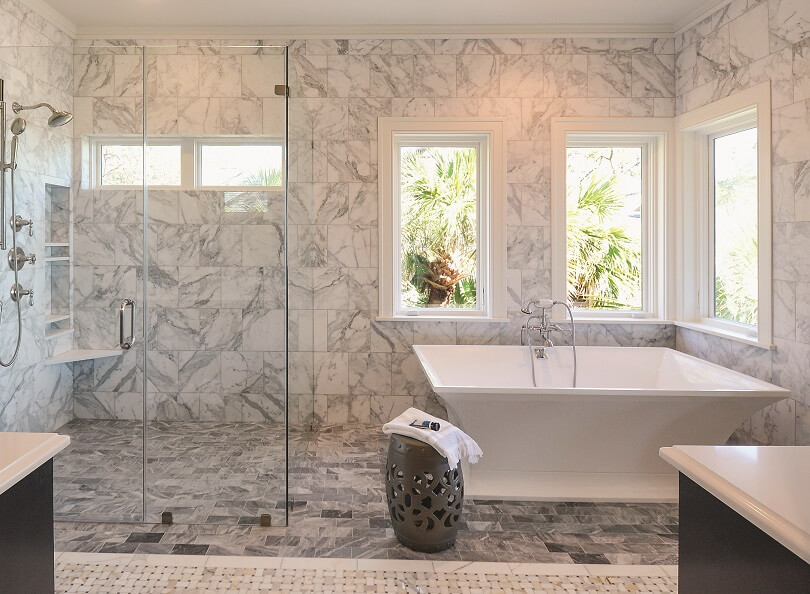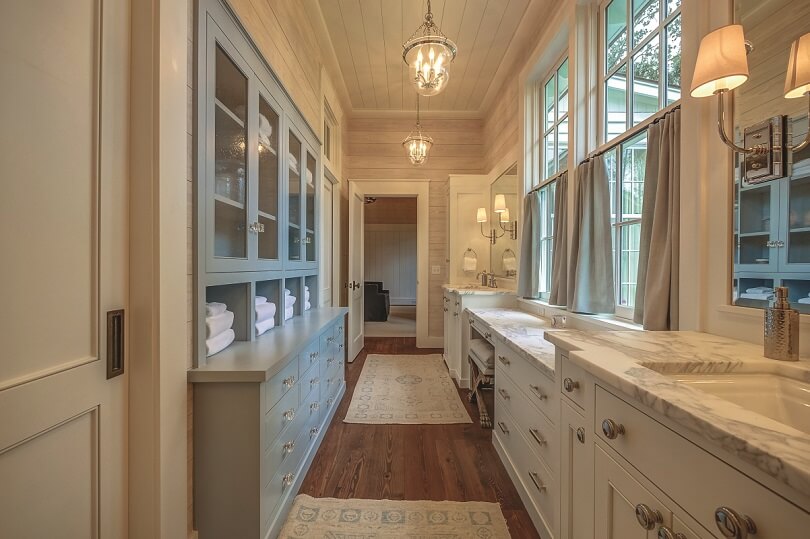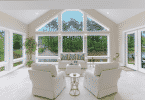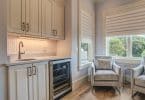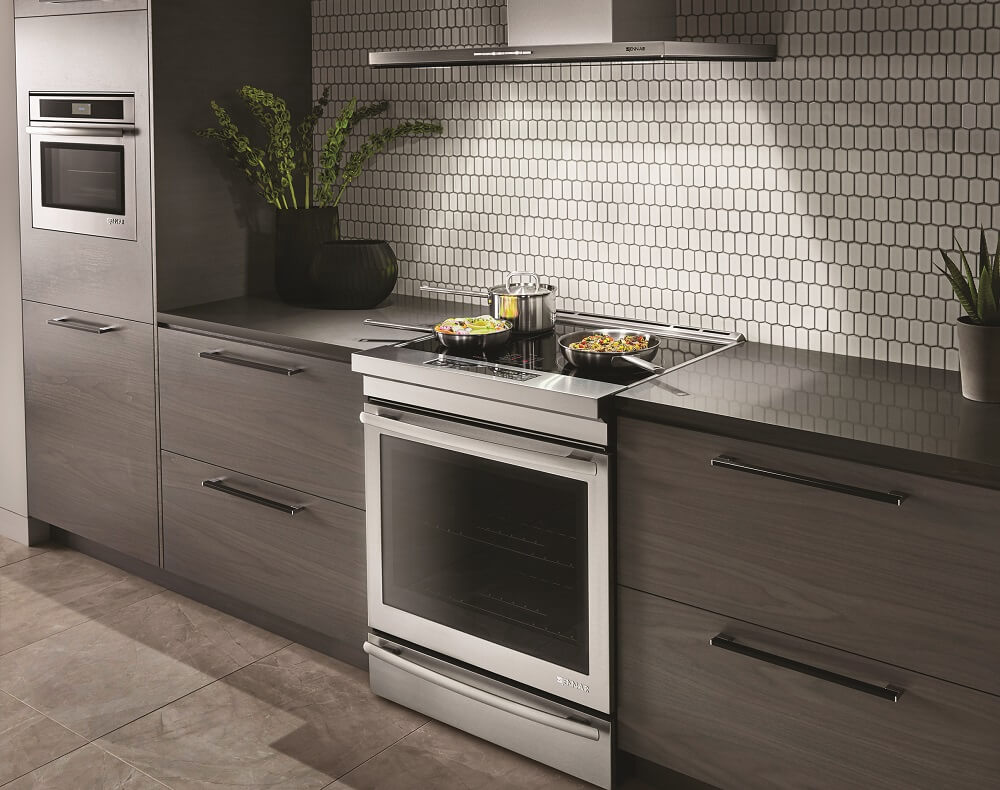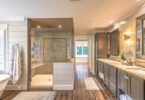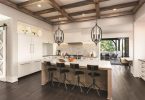Don’t overlook the bathroom as a great place to express your personal flair
There are two types of homeowners: those that value form and those that value function. Fortunately, the modern bathroom is the perfect place to explore design possibilities that cater to both. Texture, color, lighting and visual lines all play an important role when creating a harmonious environment to escape to at the end of the day. If your bathroom needs a little inspiration, takes some cues from these awe-inducing chambers.
Texture Bathrooms are one of the most used spaces in a home, and often they are the smallest. They also require hard and smooth surfaces so that they are easy to clean and water-resistant. To increase a bathroom’s visual appeal, add texture by starting with tile or wood surfaces and then “layering” the room in subtle finishes. Tile ranges from richly veined marble and faux wood grain to smooth and glossy subway tile. Small tile with dark grout can be used to create repetitive patterns that clearly define space, while larger, smooth tile creates a feeling of openness. Other materials like chrome or brass fixtures, fluffy soft towels and rugs, and ornate or streamlined cabinetry help further add texture to a room. Cabinets with pronounced grain or faux-finishes offer patterns that can ultimately affect the visual “busy-ness” of a room, so be careful to keep texture in balance.
Line,Shape and Form This triad of design defines how a room appears. Vertical lines from cabinets, windows and shower stalls make a room feel taller while horizontal lines make it feel broader. Even the lines of floor tiles help define the space by making it feel larger (diagonal tiles) or smaller (parallel). For shape, balance square or rectangular elements like cabinet drawers, windows and tiles with curves that can be found in drawer pulls, lighting and Palladian window tops. Form is what an architect uses to create harmony and define space. Often form is used to manipulate a room so that it is perceived differently than it actually is. For example, light colored cabinets look less massive in a small area than natural oak ones. A glass shower door visually lets you see deeper into a space making it feel larger than a shower with a patterned, dark colored shower curtain stopping you short.
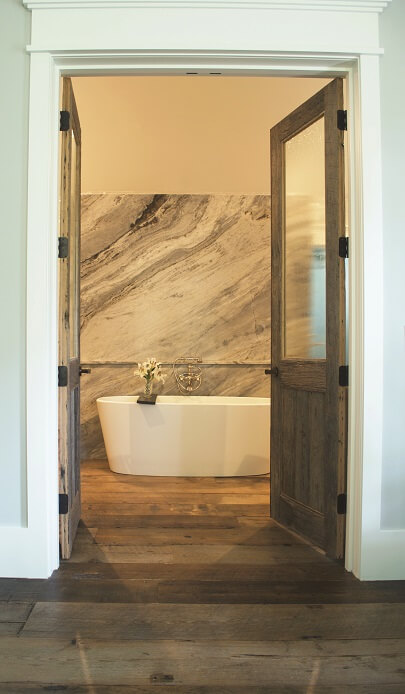
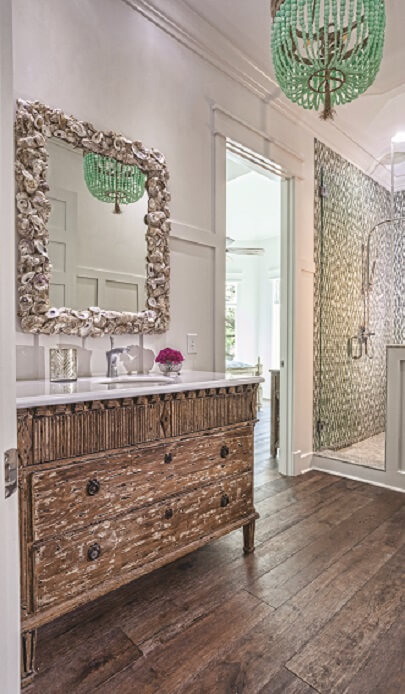
Color Volumes have been written on color theory, but there are a few basic concepts to remember when choosing the right colors for your bathroom. Light colors reflect light and make a space look larger and more ethereal; dark colors absorb light and make spaces look smaller and more dense. Contrasting colors cause the eye to stop and break down space into small sections. A similar color palette, especially if neutral, allows the eye to move continuously through a space so that the entire area seems larger. Warm colors and their pastel versions advance toward the viewer making objects seem closer and larger. While cool colors, which absorb light, appear to recede from the viewer making objects look smaller and farther away.
Once you have settled on a preferred color, create a color scheme for your bathroom. A monochromatic scheme uses one color, repeated throughout the room in different shades and tints. Analogous schemes pull from colors that are side by side on a color wheel, like periwinkle, blue and sea foam. Complementary colors are based on a pair of colors and their shades and tints that lie opposite on the color wheel, like gold and purple, or a more subtle version, pale yellow and violet.
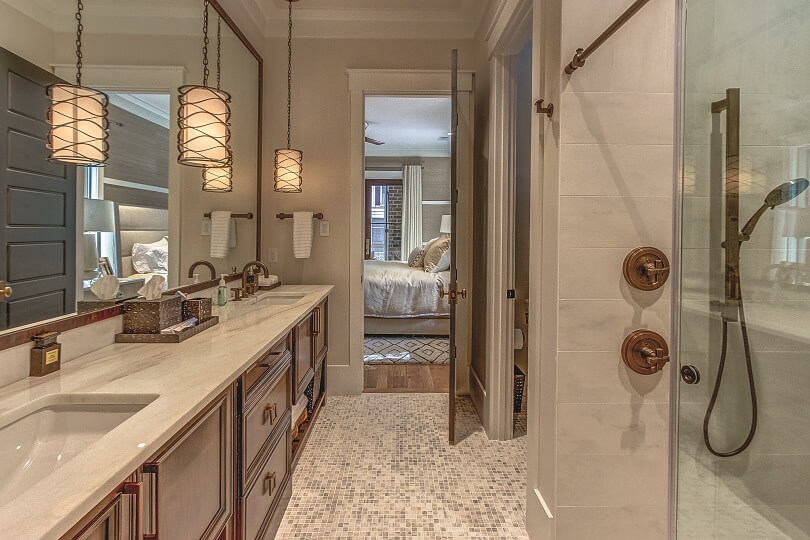
Lighting If your bathroom includes a window, its location could have an affect on color. Rooms that receive light from the north and east appear cooler, whereas, the sun’s incoming rays from the south and west will offer a warmer glow. Artificial lighting has a dramatic affect how colors look as well. Fluorescent light will offer a cool blue-green tint that can be harsh against skin tones, while incandescent light provides a warm yellow-red glow. LED lighting comes in a variety of light “colors” that range from cool to natural light to warm. Choosing a light that is bright enough for the daily bathroom routine and that complements your image in the mirror will get your day off to a good start.
Function At the end of the day, it doesn’t matter what tile you’ve chose or what paint chips you stressed over as long as your bathroom functions seamlessly and offers the amenities you really need like proper cabinet space and durable fixtures. Toilets and tubs come in different sizes and lengths to accommodate different bodies so don’t be shy to visit a showroom and try them out for size. If you spend more time in the shower than the tub, check out the variety of shower head options and choose one that has a pressure you like. Make sure the sinks and faucets you choose are not only beautiful but practical as well.
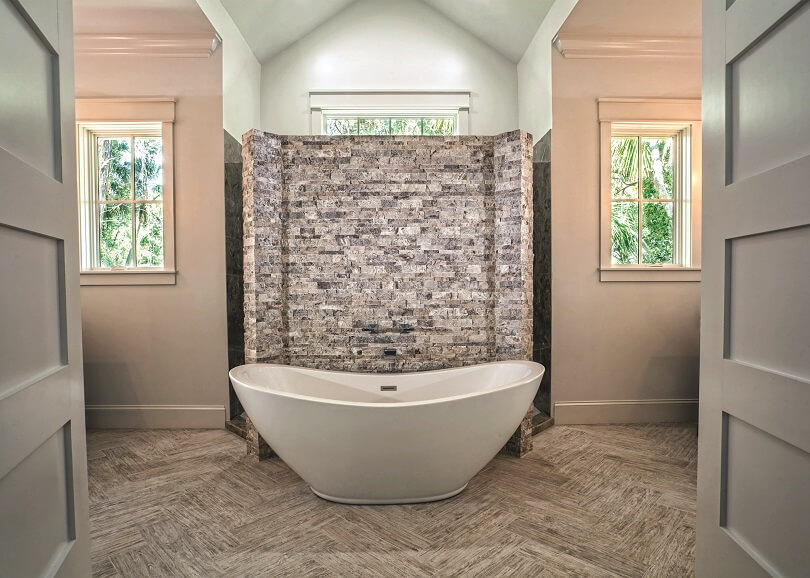
The Fine Details
Explore using different materials, finishes and patterns that give your bath a wow factor. Install cabinets that are designed to mimic pieces of furniture–reclaimed pieces are especially popular right now. Add a towel warmer to give your bath a spa-like atmosphere. Have fun with knobs and pulls, which can be both functional and interesting. If you thought wallpaper was a thing of the past, think again. Wallcoverings are making a comeback in creative patterns and colors.
